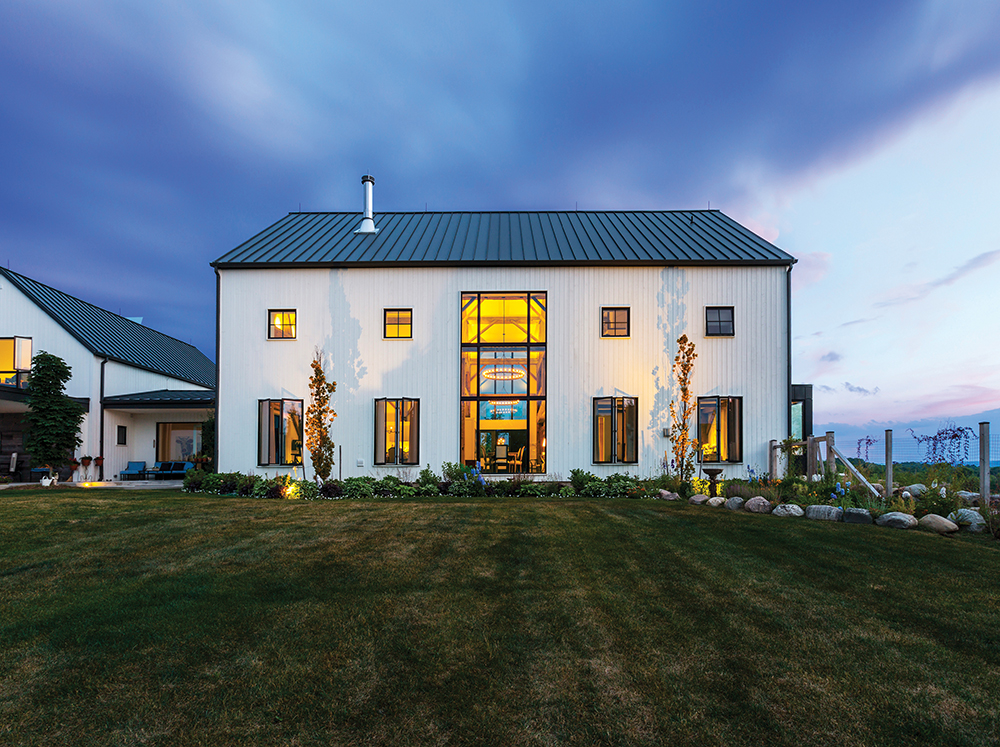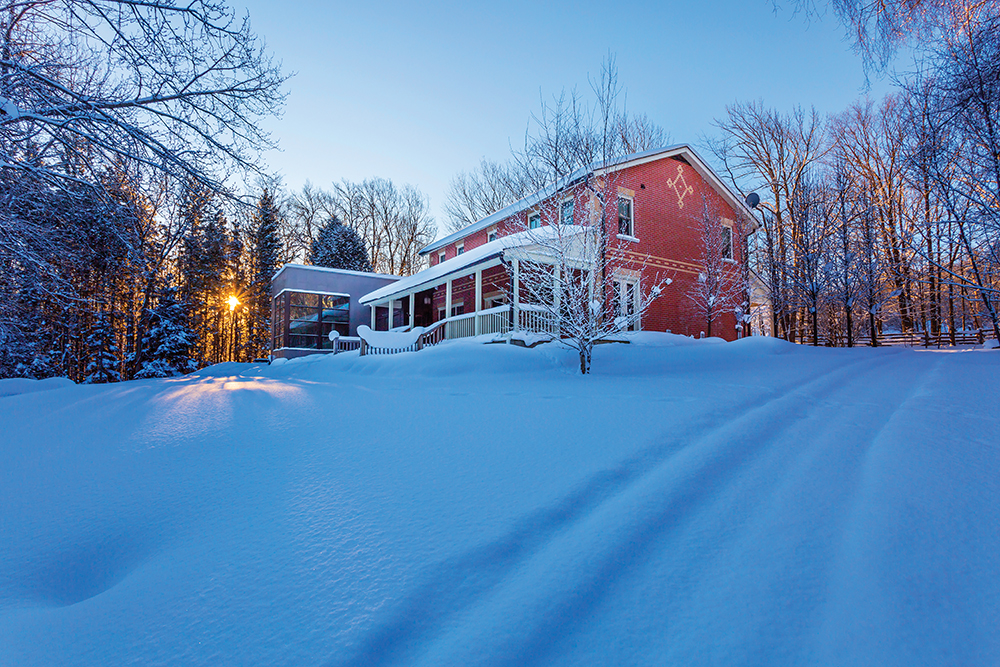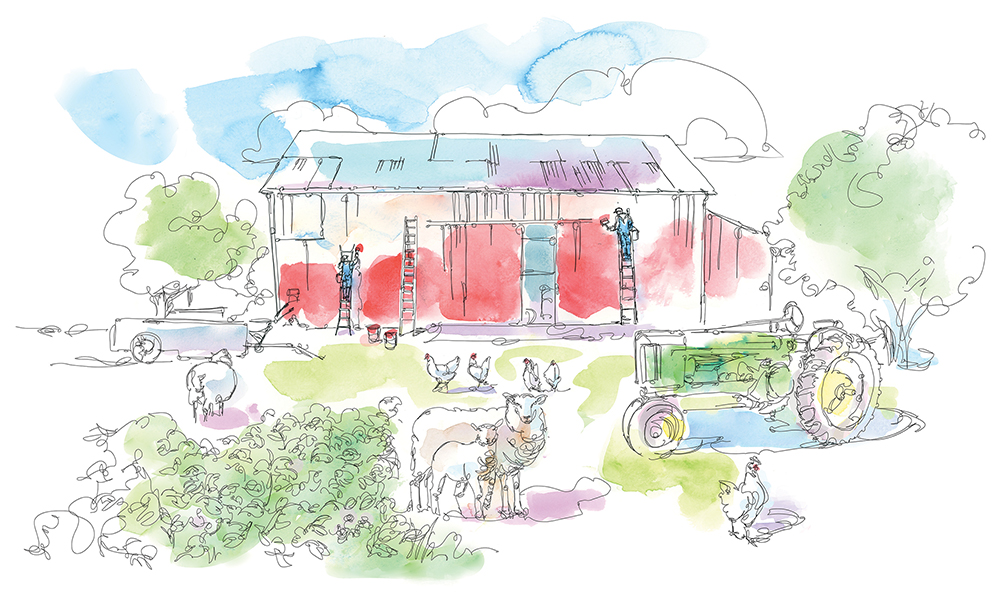Grand old barns are getting a new life.
by Anya Shor // Photography by Anya Shor
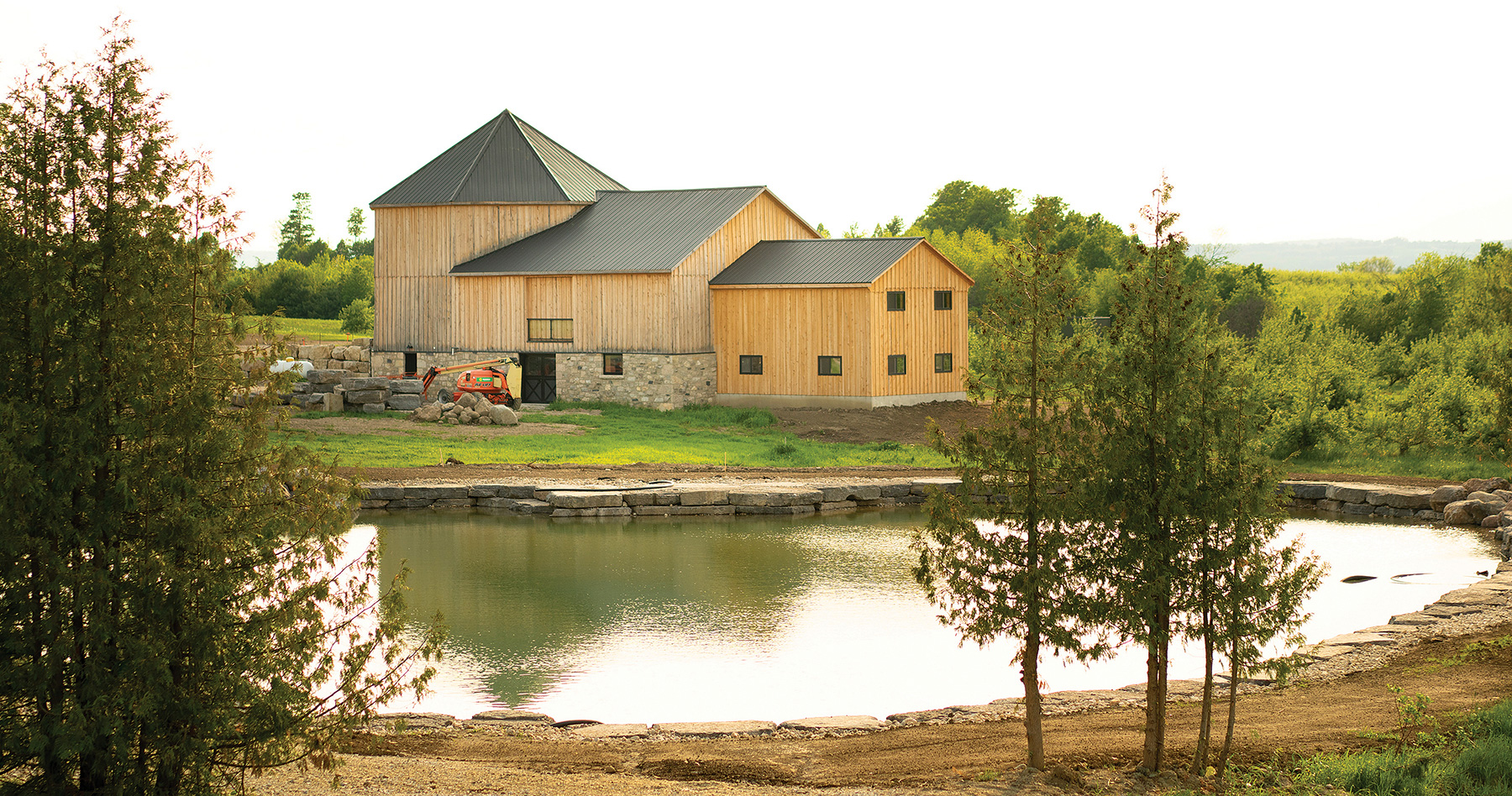
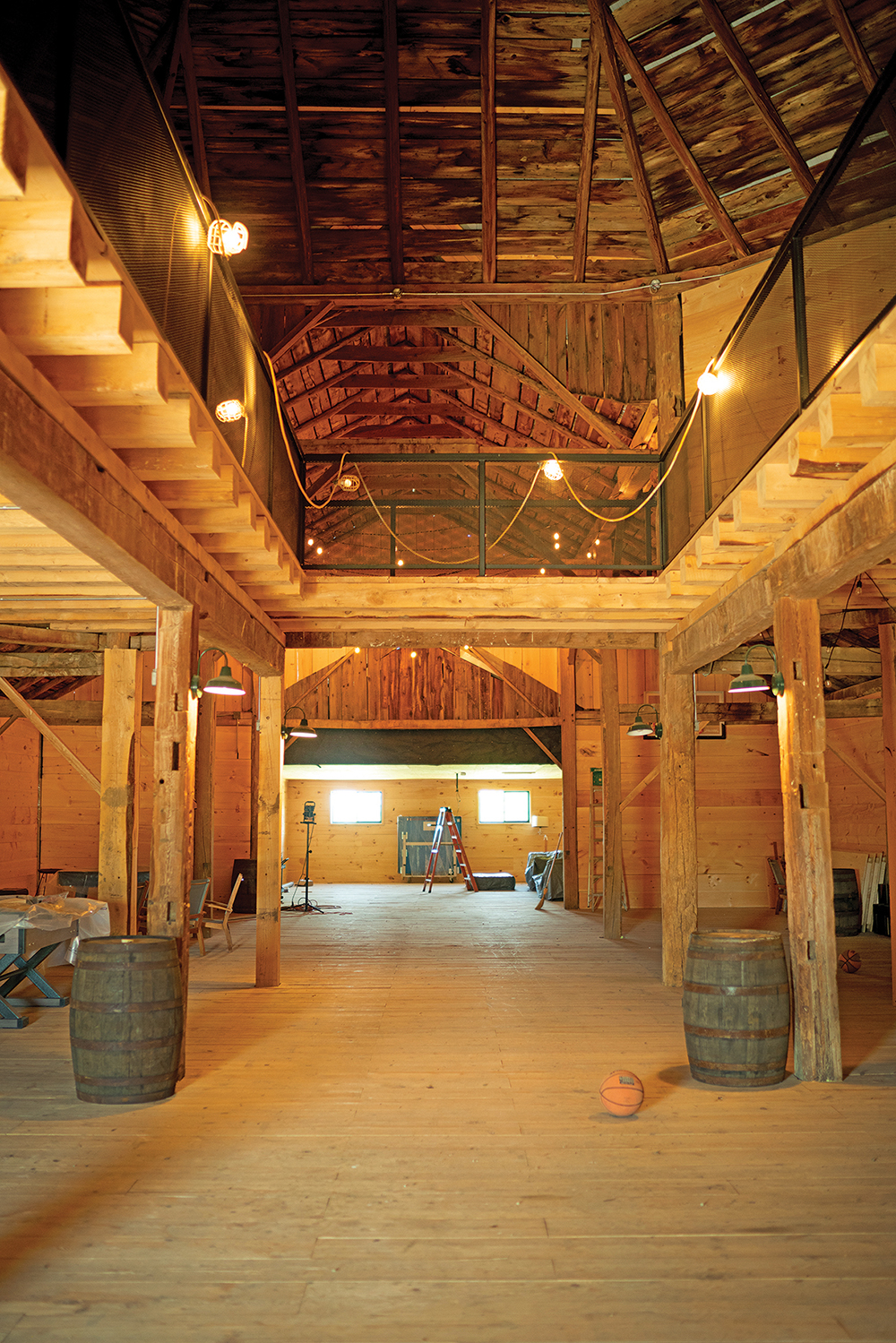
Rural Ontario is dotted with sleepy old giants. Their roofs, like hoods, set dramatically against a big sky. Some stand tall and proud, a testament to the labour of men and strong, sensible construction. Others are threadbare and leaning precariously towards the earth from which they sprang.
A barn, like a living thing, requires heat to ensure its survival, existing symbiotically with the bodies it is designed to keep. Without the body heat, the mortar crumbles. Left to the inevitable effects of entropy, an unused old barn can become a safety hazard, often in need of being torn down. Each barn gone is a piece of lost history.
Now as more people acquire farm properties for purposes other than farming, many are envisioning a new life for these giants. There are few structures as beautiful and awe-inspiring in scale and atmosphere, or that allow for such a range of possibilities. As people increasingly look for ways to expand living spaces, rethink the way they entertain and gather, or rearrange the way they work—especially in creative endeavours—barns afford limitless reinvention and repurposing.
Some are left as is, rejuvenated merely with activity and care; some are extensively transformed with modern amenities and technology. Either way, preservation of these historical structures is necessary and much appreciated.
One such giant named George, sits perched high above the Bay, with sweeping views of the water and surrounding land. Dating back to sometime in the late 1800s, it is recognizable immediately for its unusual shape—the octagonal construction is thought to have been efficient for storing hay—and has often drawn people to the property for a closer look.
As Walter Scott once wrote, “If a farmer fills his barn with grain, he gets mice. If he leaves it empty, he gets actors.”

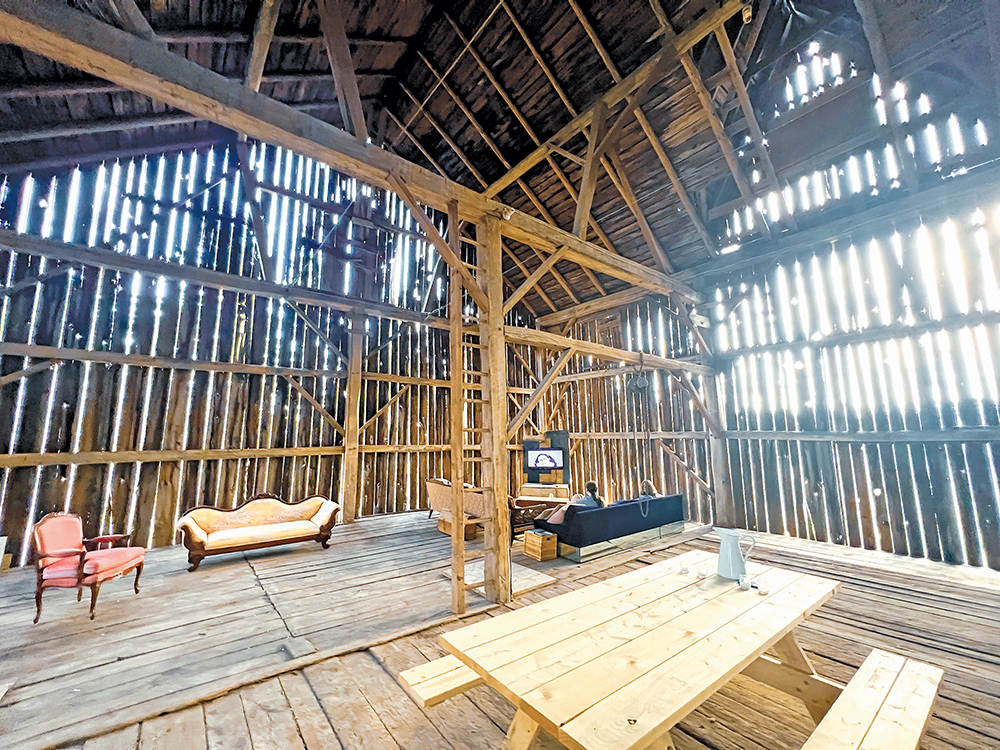
When the current owners, a couple and their three children, acquired the property in 2020, the barn was in poor shape. But the family was undeterred. “The immediate thought was, ‘Let’s see if we can bring this beauty back to life’,” says the couple. “It was a passion project.”
They found an Amish barn builder who was ready to work with them, restoring the foundation and framework while respecting the original design.
The result is impressive; the dramatic architecture of the octagonal dome is breathtaking. The building is sound and safe and ready for its new life. The couple envisions a place to gather, host weddings, maybe someday house horses in the stalls beneath. “A place we can all enjoy.”
The main floor holds a pool table and a basketball net, plus a stash of board games. The family hopes it will become a place of community, for their friends and extended family to be together and to play, a vital extension of the home they are constructing just up the drive.
When asked about the name, George, the owners explained that it came about at a Thanksgiving dinner the family hosted last year for close friends. Guests were invited to submit names.
“Given the space, the natural beauty of the area and the history, we felt it commanded a strong name, a name with history and character like the building itself. And so George was the winner! Not to mention the views of Georgian Bay from the property.”
Some barns now serve as creative spaces. For artist Manny Neubacher, the scale of the space allows for a unique sense of freedom to create large canvases and sculpture. “It’s a living, breathing space”, says Neubacher. “It allows nature in, in a way a traditional studio doesn’t. You feel like you’re a part of it.”
The light in the barn takes on a special quality, streaming through the gapped slats, diffused by the dust and pollen. “There’s nothing harsh in the barn. The corners are soft, the hues are muted and natural. Perfectly imperfect.” Neubacher also finds the sense of history inspiring. “All those layers of the past find their way into the work somehow.”
The barn, situated on a sleepy road at the top of Beaver Valley, also provides valuable living space for lounging, watching movies and hosting dinners in the warmer months. “It’s such an incredible backdrop to whatever event happens to be going on in there. The barn becomes a character in the scene, whatever that may be.”
While full conversions into residential living spaces remain a complicated and costly endeavor, the rewards are plenty for the intrepid builder.
“Working with a barn from the 1800s certainly has its challenges, but having the interior of a contemporary home filled with museum-worthy barn frame delivers a unique character that is impossible to duplicate. It tells a story of the past which is fun to marry to the present,” says Jeremy Creed, who just completed a barn conversion near Meaford.
Barns also make for excellent music rehearsal and performance spaces. The traditional wood slat interiors have ideal absorptive, diffusive and reflective characteristics for live vocals and instrumentation. They also serve as unique and romantic backdrops for theatre.
As Walter Scott once wrote, “If a farmer fills his barn with grain, he gets mice. If he leaves it empty, he gets actors.”
Anything to keep the giants warm.






